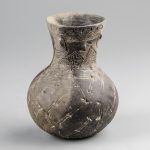
The Budapest History Museum’s unique Prehistory photographic collection is the most complete archive of the original photographic documentation of the excavations of prehistoric sites in and around the Hungarian capital.
The earliest photographs are held on glass negatives, which are themselves invaluable parts of museum history. The collection’s photographs present excavations and document archaeological finds, exhibitions and other events.
By the end of 2011, our photographic archive contained 63,819 images. Of these, 40,127 are digital photographs stored on CDs, DVDs and the museum’s computer network. The traditional photographic collection contains 23,692 images including glass negatives and negatives of various sizes as well as, framed and unframed diapositives. The inventory is mostly organised thematically (e.g. individual excavations, exhibitions, find groups). Therefore, images of varying sizes and types (e.g. negatives and positives of different sizes) may be grouped together.
The museum received financial support from the Ministry of Education and Culture to modernise the archive in 2012. During this process, we created a unified storage system to improve inventorying and the protection of the collection. The entire collection and the inventory records are kept in two fireproof cabinets. The nearly 800 invaluable glass negatives are wrapped in special paper and kept in purpose-made boxes. Other negatives and slides as well as the CDs and DVDs are stored in ring binders of uniform sizes, in see-through, sealable storage packs that meet the requirements of the PAT (Photographic Activity Test). Presently, this type of storage system provides the greatest transparency, research availability and protection of the collection.
Curator: Viktória Kisjuhász


